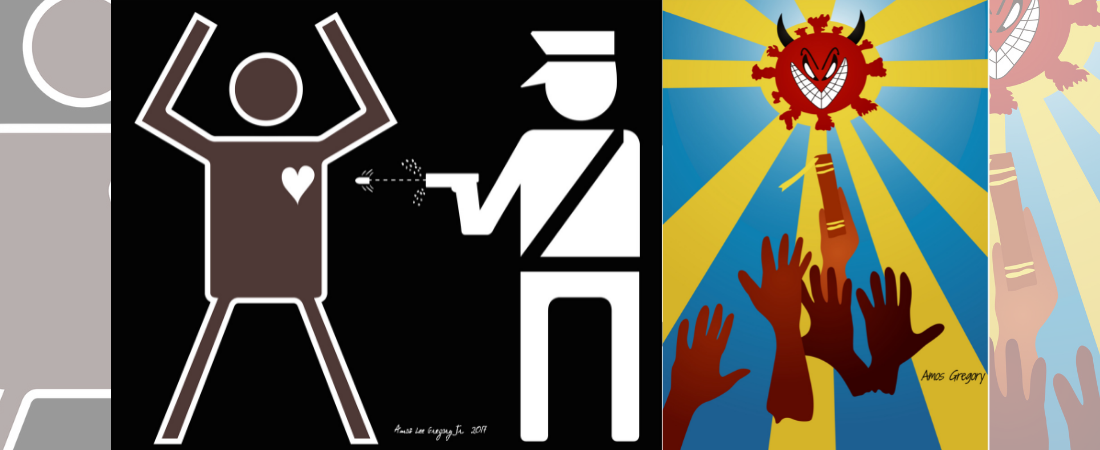The Veterans’ Voices: Painted Realities exhibition, currently on view and opening virtually on May 31, 2021, was intended as a platform for the voices of American veterans. But the rejection and removal, respectively, of two controversial works demonstrate that veterans’ voices are only welcome as long as they fit within the boundaries of the predictable and raise no hackles.
For the exhibition, the Walt Disney Family Museum partnered with Veterans Alley, a non-profit mural project in San Francisco, led by Amos Gregory, an artist and Navy veteran. The project gives voice through art to three groups of usually-silenced veterans: African American, rural and deported. The themes explored in the exhibition range widely and include trauma, race, homelessness and healing.
However, two pieces are missing from the show: one that never made it in and one that did, but was removed from display after complaints.
Truth of the Matter, a work by Amos Gregory pointing at police violence, was solicited by the show’s curators late in the process and after the curatorial deadline but well in advance of the initial opening of the exhibition. Citing the missed deadline, the museum rejected the work.
Truth of the Matter has been controversial ever since it appeared as a mural in Veterans Alley in San Francisco in 2016. It references police violence against Black men and, in the context of the Veterans’ Voices exhibition, alludes to the violence African American veterans encounter in their home country. Controversial as it may be, in 2021 the work is more relevant than ever. The curators agreed. That the museum should, nevertheless, reject this powerful piece, raises doubts about its commitment to really giving veterans a voice.
The other missing work, Blinded by the Light, also by Amos Gregory, was put on display but removed from the show after a visitor complained. The artist was not informed about the removal. The piece is critical of the role of religion and religious gatherings in responding to the COVID-19 pandemic (represented as a devil-faced virus). However, the complaint addressed the style of the work rather than its intended message: in the depiction of the virus and the sunburst in the background, the complainant perceived a negative reference to Asian people.
While art can be interpreted in many ways, the role of the institution is to protect the work and help explain its symbolism, not to yield to every complaint and censor art. In the case of Blinded by the Light, the sunburst was inspired by the work of Emory Douglas, an artist and activist who created iconography to represent Black American oppression. The features of the devil are reminiscent of many mythological depictions. But the museum appears to neither have explained this to the complainant, nor given the artist the opportunity to do so.
As a private museum, the Walt Disney Family Museum has a legal right to censor at will. However, as an institution dedicated to an open and equitable cultural sphere by giving voice to underrepresented veterans, it has failed by censoring those very voices. We hope that the exhibition can soon be seen in its entirety elsewhere.
https://www.waltdisney.org/veteransvoices
Images of Truth of the Matter and Blinded by the Light courtesy of artist Amos Gregory


